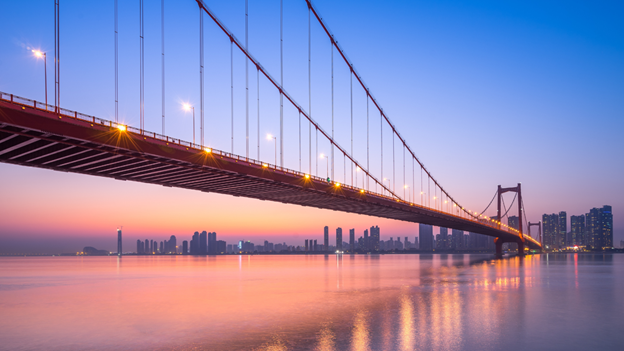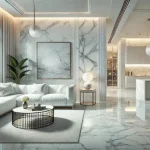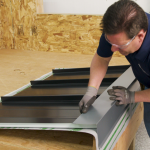Architectural Details That Define the American Bridge
The American bridge is more than a piece of infrastructure—it is a sculptural expression of ingenuity, identity, and evolution. From the soaring towers of the Brooklyn Bridge to the sleek tension of the new San Francisco–Oakland Bay Bridge, American bridges carry not just vehicles but stories. They are landmarks, testaments to engineering and aesthetic courage, and above all, symbols of the cities and landscapes they inhabit. What defines the American bridge architecturally isn’t a single style, but a language of design elements that have evolved over time—reinterpreted, refined, and often reimagined.
The Tower: Vertical Emphasis and Identity
Towers are perhaps the most recognizable visual signatures in many of America’s most iconic bridges. In suspension bridges like the Golden Gate or the George Washington Bridge, towers aren’t just structural—they’re sculptural. Rising above the deck and anchoring the cables that hold the bridge aloft, they serve both form and function.
Their design often communicates a city’s personality. The neo-Gothic towers of the Brooklyn Bridge evoke permanence and grandeur, while the more minimalist steel forms of modern bridges like the Bay Bridge’s eastern span speak to industrial elegance and restraint. In newer works, architects have explored using glass, perforated steel, and even LED-lit composites to push these forms beyond engineering into the realm of art.
Cables and Catenaries: The Poetry of Tension
The graceful arc of cables on a suspension or cable-stayed bridge often becomes its most defining gesture. These lines, typically arranged in fan or harp formations, allow for both minimal material use and maximum span—a principle born of necessity that became a defining feature of modern bridge aesthetics.
Take the Zakim Bridge in Boston: the harp-like cable layout creates a dramatic triangular profile against the skyline, making it one of the city’s most recognizable landmarks. Or consider the Sundial Bridge in Redding, California—designed with an asymmetrical cable-stayed system, the structure appears to lean into the landscape with dynamic tension. In both cases, the cables become not just functional components, but architectural statements.
The Deck: Frame for Experience
Though less glamorous than towers or cables, the bridge deck is where form and experience converge. It is both pathway and platform—a frame for movement and a window to views.
Architects often shape the deck to enhance user interaction. Wider pedestrian paths, integrated lookouts, and subtle curvature all contribute to how people feel while crossing. The High Trestle Trail Bridge in Iowa, for example, incorporates angular steel frames over its deck to mimic the look of descending into a mine shaft—referencing the region’s mining history while transforming a rail trail into a narrative journey.
Modern bridge decks may also float above landscapes with elegance, using slender profiles and cantilevered walkways to minimize visual impact and maximize views. This interplay of engineering precision and visual subtlety is a hallmark of American bridge design.
Lighting: Nighttime Identity
Illumination has become an essential architectural detail in bridge design, transforming these structures from day-use infrastructure to 24/7 landmarks. Light reveals form, emphasizes rhythm, and creates atmosphere.
The bridges along the Chicago River, for instance, come alive at night with uplighting that emphasizes their trusses and railings. The Bay Lights installation on the western span of the Bay Bridge used 25,000 LED lights to turn the entire structure into a kinetic artwork. And in smaller cities, carefully designed lighting has turned utilitarian river crossings into illuminated focal points that build local pride.
Today, bridge lighting is no longer just about safety—it’s about storytelling, identity, and community.
Trusses and Structural Expression
While cable bridges often take center stage, America has a long history of truss bridges whose exposed frameworks offer a unique aesthetic appeal. These bridges—often constructed in the 19th and early 20th centuries—feature latticed steel patterns that express their load-bearing logic in intricate detail.
Rather than concealing the structure, truss bridges celebrate it. Whether it’s the rust-red ironwork of the Eads Bridge in St. Louis or the black steel of the Three Sisters bridges in Pittsburgh, the pattern of diagonals and verticals becomes a kind of architectural ornament.
Many contemporary bridge designs reference this heritage, even when using different materials. It’s a nod to a period when form and structure were one and the same.
Contextual Integration: Bridge as Landscape
A growing focus in American bridge design is contextual sensitivity—how the bridge integrates with its surroundings. Materials are selected to reflect regional character. Profiles are adjusted to avoid blocking views. Landscaping is designed not just around the bridge, but as part of it.
The Mike O’Callaghan–Pat Tillman Memorial Bridge near the Hoover Dam is a prime example. Its simple concrete arch frames the landscape without overwhelming it, allowing the natural drama of the canyon to take center stage. This philosophy—of the bridge as a supporting actor in the drama of place—is increasingly common in both urban and rural settings.
More Than Passage
The American bridge, in all its variations, is never just about crossing from point A to point B. It’s about how we do it—what we see, feel, and remember along the way. Architectural details like towers, cables, lighting, decks, and structural patterns shape those experiences, making bridges as culturally meaningful as they are technically impressive.
Designers today are carrying forward the legacy of American bridge architecture, informed by history but unafraid to innovate. As these structures continue to span rivers, canyons, highways, and time itself, their design details remain essential expressions of our collective vision and resilience.
For those tracking the evolution of design in infrastructure, these themes regularly appear in LA architectural press—a space where civic identity and structural storytelling often converge.















